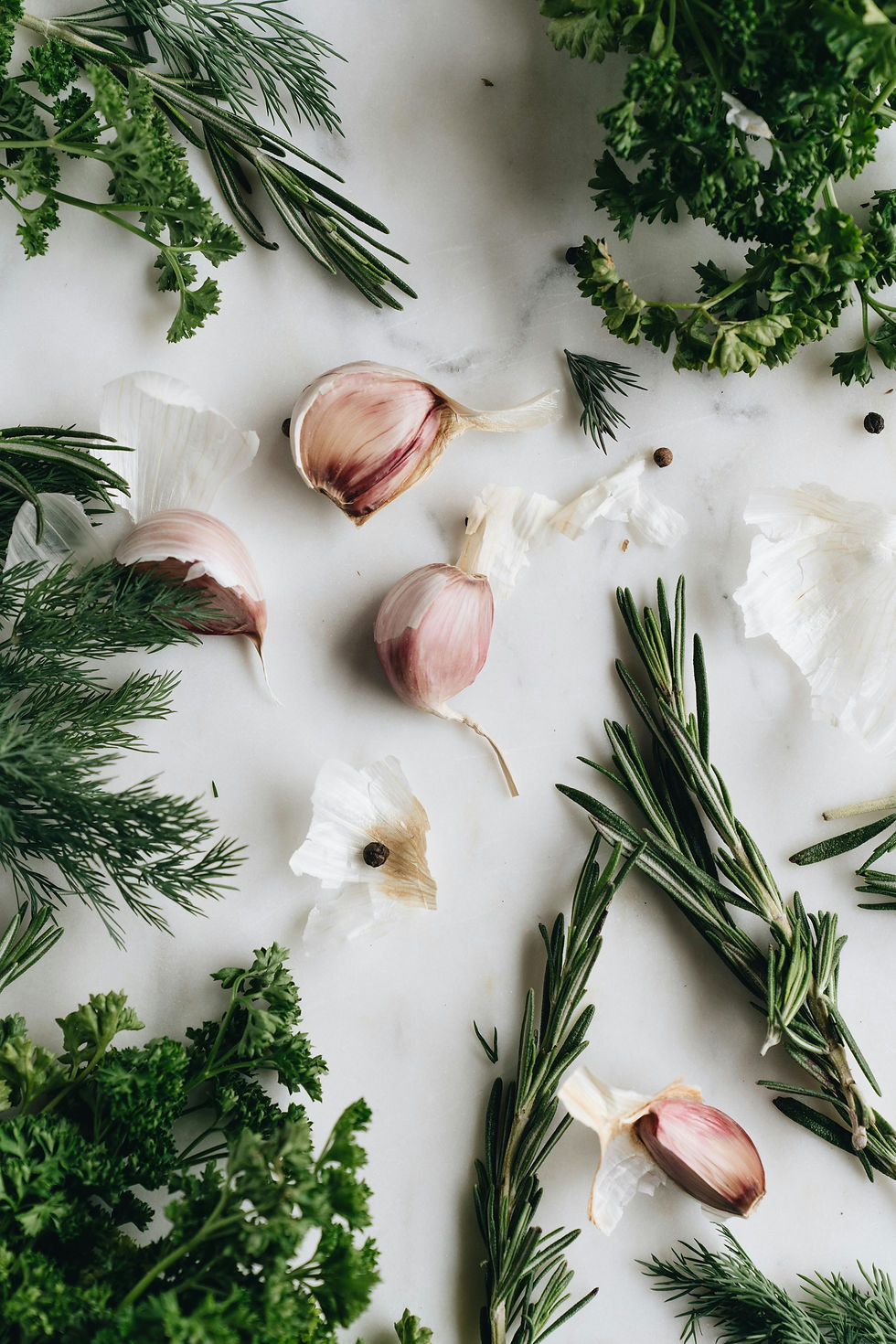Sage: The Thanksgiving Herb That Heals: Discover the healing benefits of sage (Salvia officinalis)
- KAREN DETTORE

- 23 minutes ago
- 3 min read

The Healing Power of Sage
As your kitchen fills with savory aromas this Thanksgiving, one herb quietly works double duty — adding flavor to your food and healing to your body. Sage (Salvia officinalis) is more than a traditional holiday spice. It’s a pungent, bitter, and astringent herb known for its anti-inflammatory, antioxidant, and cognitive benefits.
Pungent and Bitter: Nature’s Digestive Duo
Sage’s taste tells its story.
The pungent notes warm digestion and ease gas, bloating, and stagnation after heavy meals.
The bitter tones stimulate the liver and gallbladder, supporting healthy bile flow and fat metabolism.
Together, these flavors make sage one of nature’s best digestive allies — especially when your plate is full of gravy, bread, and butter.
Astringent Action: Drying, Toning, and Balancing
Sage is also an astringent herb, meaning it tightens and tones tissues. This helps:
Reduce excessive sweating (including night sweats)
Support oral and gum health
Strengthen blood vessel walls and improve varicose veins when used topically in oil or extract form
This balancing quality makes sage a go-to for “damp” conditions — inflammation, puffiness, and excess moisture in the body.
Science-Backed Benefits of Sage
1. Brain and Cognitive Function
Sage inhibits the breakdown of acetylcholine, the neurotransmitter linked to memory and learning. Studies suggest it may enhance mental focus and slow cognitive decline in Alzheimer’s disease.
2. Anti-Inflammatory and Antioxidant Support
Rich in compounds like rosmarinic acid and carnosic acid, sage helps neutralize free radicals and reduce inflammation throughout the body.
3. Blood Sugar and Cholesterol Support
Sage extracts may lower blood glucose, reduce LDL cholesterol, and improve insulin sensitivity — making it a supportive herb for diabetes and metabolic syndrome.
4. Oral Health
Sage tea or tincture can be used as a mouth rinse to tighten gums, reduce bacteria, and soothe sore throats — a natural alternative to commercial mouthwashes.

Wellness Tip
Sage essential oil, when diluted in a carrier oil like jojoba, can be gently massaged into legs with varicose veins to tone blood vessels and improve circulation. Always test a small area first and avoid undiluted use.
Ways to Use Sage

DIY Recipe: Sage Lemon Tea for Digestive Ease
Prep Time: 10 minutes
Serves: 1–2 cups
Ingredients
1 tablespoon fresh or 1 teaspoon dried sage leaves
1 slice fresh lemon or a squeeze of juice
1 teaspoon raw honey (optional)
1½ cups hot water
Instructions:
Place sage leaves in a mug or teapot.
Pour hot (not boiling) water over the herbs.
Cover and steep for 7–10 minutes.
Strain and add lemon and honey to taste.
Sip slowly after meals or before bed to soothe digestion and reduce bloating.
A Thanksgiving Tradition with Healing Roots
Sage has long been a symbol of wisdom, clarity, and gratitude. By cooking with it — or sipping it as tea — you honor the ancient belief that food is medicine.
This Thanksgiving, let sage be more than a flavor — let it be a ritual. Its earthy aroma grounds the spirit, its chemistry nourishes the body, and its history connects us to generations of herbal wisdom.

Final Reflection
“Sage nourishes both memory and meaning — reminding us that gratitude, like healing, begins in the heart.”
If you're interested in discovering the healing properties of food, reach out to schedule a free consultation call at karen@nutrition4wellbeing.net
Category: Herbal Wellness, Digestive Health, Functional Nutrition
Tags: Sage, Thanksgiving, Herbal Medicine, Natural Digestion, Brain Health, Blood Sugar Balance, Herbal Tea
%20(Facebook%20Cover)%20(4)_edited.jpg)



Comments